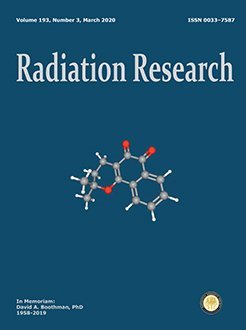The standard linear-quadratic (LQ) model is currently the preferred model for describing the ionizing radiation-induced cell survival curves and tissue responses. And the LQ model is also widely used to calculate isoeffect doses for comparing different fractionated schemes in clinical radiotherapy. Despite its ubiquity, because the actual dose-response curve may appear linear at high doses in the semilogarithmic plot, the application of the LQ model is greatly challenged in the high-dose region, while the dose employed in stereotactic body radiotherapy (SBRT) is often in this area. Alternatively, the biophysical models of radiation-induced effects with a linear-quadratic-linear (LQL) characteristic can well fit the dose-survival curve of cells in vitro. However, most of these LQL models are phenomenological and have not fully considered the biophysical mechanism of radiation-induced damage and repair, and the fitting quality decreases in some high-dose ranges. In this work, to provide an alternative model to describe the cell survival curves in high-dose ranges and predict the biologically effective dose (BED) for SBRT, we propose a novel generalized multi-hit model with a closed-form solution by considering an upper bound on the number of lethal damages induced by radiation that can be repaired in a cell. This model has a clear biophysical basis and a simple expression, and also has the LQL characteristic under low- and high-dose approximate conditions. The experimental data fitting indicated that compared to the standard LQ model and our previously generalized target model, the current model can better fit the radiation-induced cell survival curves in the high-dose ranges (P < 0.05). The current model parameters and parameter ratios were determined from the fits in different kinds of cell lines irradiated with various dose rates and linear energy transfer (LET), which indicates that the model parameters significantly depend on the dose rate and LET. Based on the current model, we derived two equivalence formulae for the BED calculations in the low- and high-dose ranges, and then calculated the BED for the clinical data of SBRT from 17 selected studies. The correlation analysis showed that there were significant linear correlations between the BED at isocenter and planning target volume (PTV) edge calculated by this model and the LQ model (R > 0.86, P < 0.001). In conclusion, the generalized multi-hit model proposed in this work can be used as an alternative tool to handle in vitro radiation-induced cell survival curves in high-dose ranges, and calculate the in vivo BED for comparing the dose fractionation schemes in clinical radiotherapy.
How to translate text using browser tools
7 February 2020
Generalized Multi-Hit Model of Radiation-Induced Cell Survival with a Closed-Form Solution: An Alternative Method for Determining Isoeffect Doses in Practical Radiotherapy
Lei Zhao,
Xinpeng Chen,
Jiahuan Tian,
Yuxuan Shang,
Dong Mi,
Yeqing Sun
ACCESS THE FULL ARTICLE

Radiation Research
Vol. 193 • No. 4
April 2020
Vol. 193 • No. 4
April 2020




